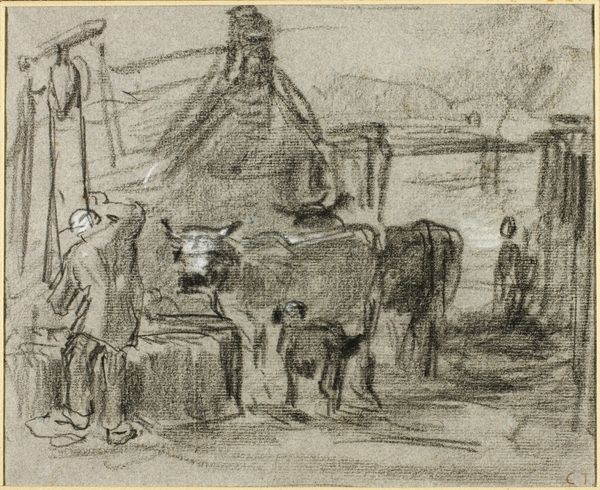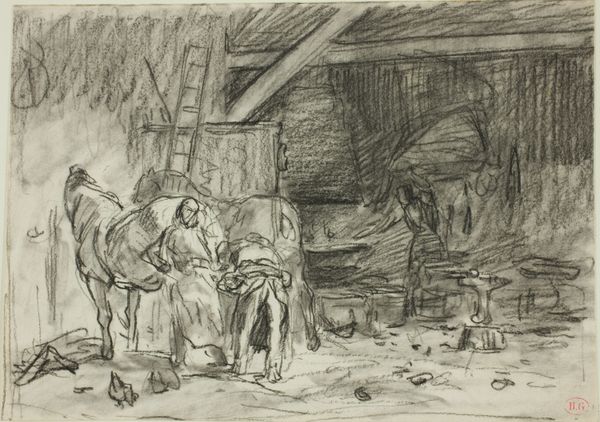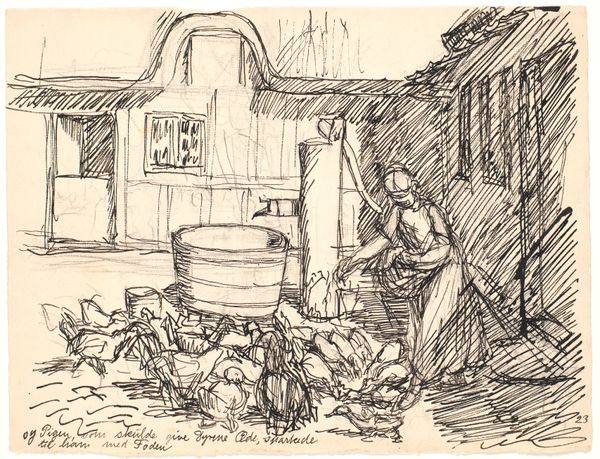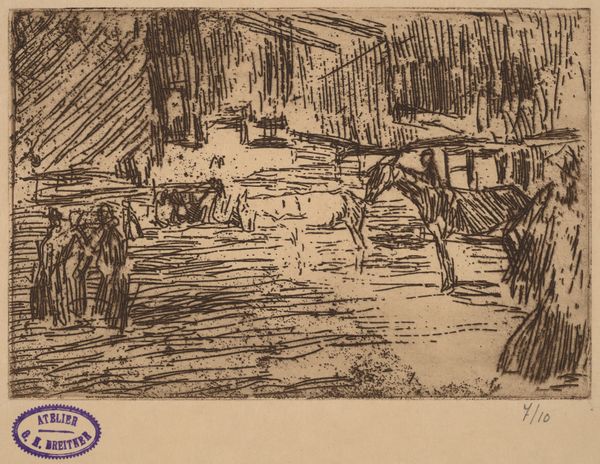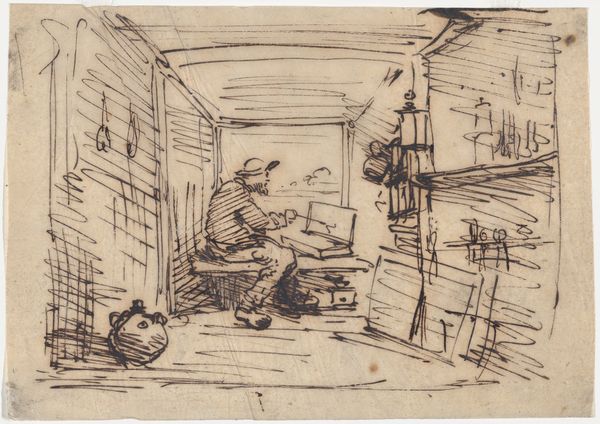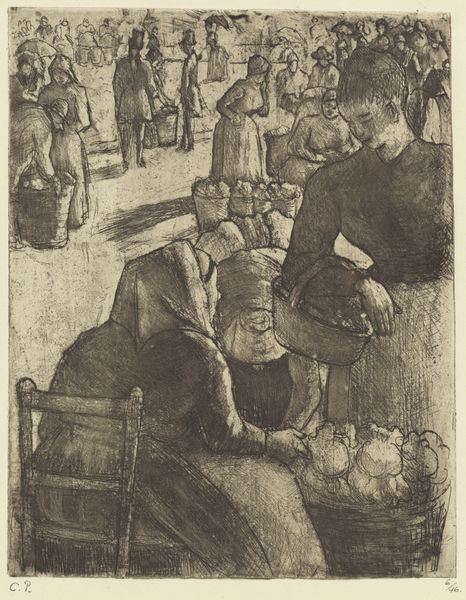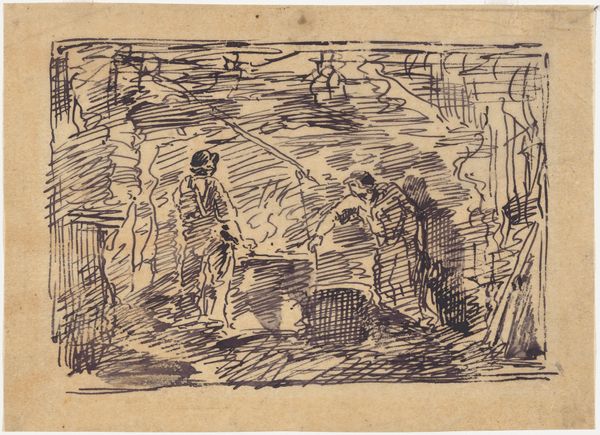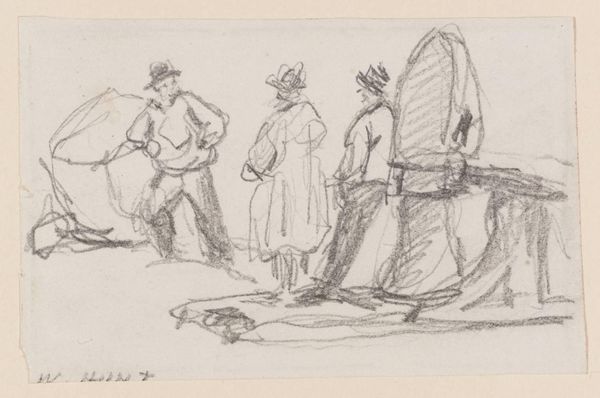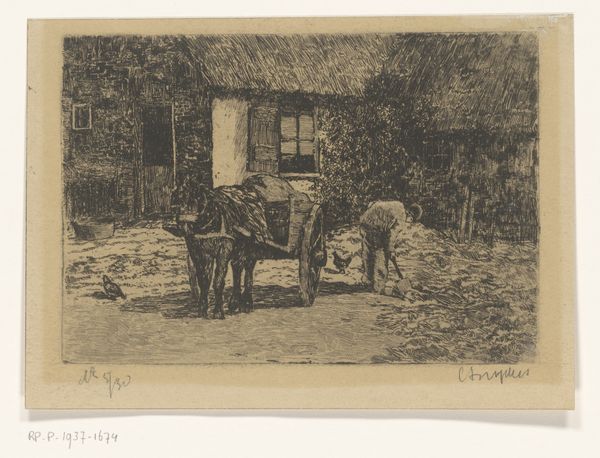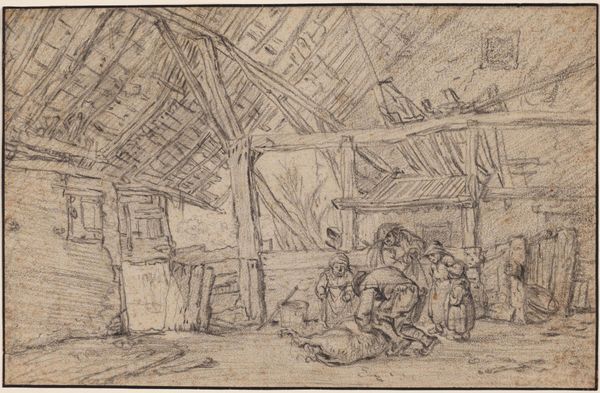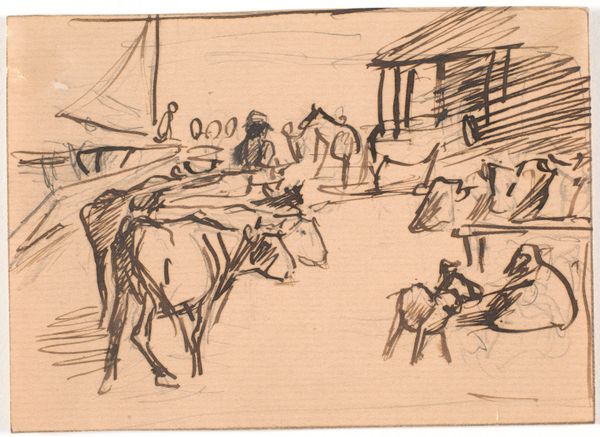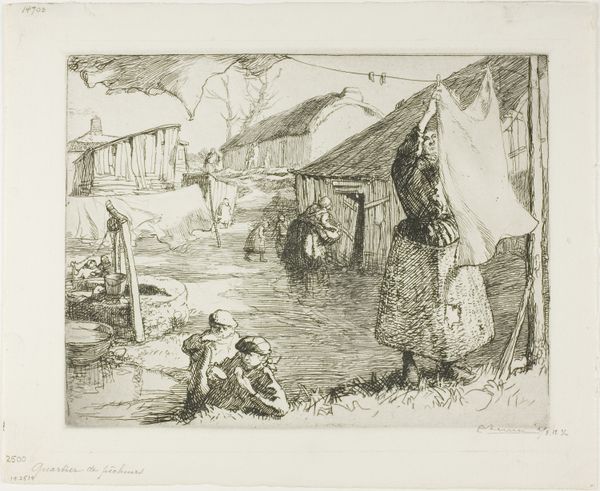
drawing, paper, ink, indian-ink, pencil
#
drawing
#
16_19th-century
#
mechanical pen drawing
#
pen illustration
#
pen sketch
#
paper
#
personal sketchbook
#
linework heavy
#
ink
#
german
#
sketchwork
#
indian-ink
#
pen-ink sketch
#
pencil
#
line
#
pen work
#
sketchbook drawing
#
genre-painting
#
storyboard and sketchbook work
#
realism
Copyright: Public Domain
Editor: Here we have Fritz Boehle's "Pig Trade," created in 1896, using ink and pencil on paper. The linework gives it the raw feeling of a sketch, and it really captures a sense of daily life in the countryside. How do you interpret the social commentary, if any, of Boehle depicting this transaction? Curator: It's interesting you call it social commentary. While Boehle wasn't explicitly political, genre scenes like this offer insight into the socio-economic realities of rural communities. The exchange of livestock represented a vital economic transaction. What do you observe about the participants themselves? Their clothing, their postures? Editor: Well, they look like working-class farmers, dressed plainly. Their posture does suggest they are engaged in some financial dealing. There is also a child by a large cart, perhaps also involved. Curator: Exactly. Think about the power dynamics involved. Who benefits the most from this transaction? What might be the social implications for these farmers tied to agricultural cycles and the market forces beyond their immediate control? How do you think the portrayal of the pig itself factors into the scene's social dimension? Editor: I hadn't thought of the pig. Maybe it represents the farmers' livelihood and therefore, vulnerability? Also, its unglamorous portrayal highlights the hard labor of the profession? Curator: Precisely. Boehle isn’t just depicting a pig trade; he’s presenting a snapshot of a specific social order, dependent on their livestock and market circumstances. It invites questions about the conditions that shaped these rural economies and communities. Editor: This definitely puts the artwork in a richer social and economic context for me! Curator: Absolutely. Looking at art this way reminds us how even seemingly simple scenes can tell complex stories about the world we live in.
Comments
No comments
Be the first to comment and join the conversation on the ultimate creative platform.
